- Messages
- 59
- Reaction score
- 95
- Points
- 53
Follow along with the video below to see how to install our site as a web app on your home screen.
Note: This feature may not be available in some browsers.
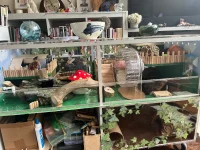
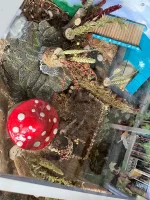
She can give Blossom a run for her money then who has a love of shredding egg boxes lolDuprasi are actually more closely related to gerbils (they are also known as the fat-tailed gerbil), but in general care is closer to that of a hamster. They are about the size of a dwarf hamster, and just as clumsy, so consideration has to be given to making sure they can’t fall of things. So the cage I planned for a dwarf only needed a couple of tweaks.
They are insectivores, so diet is again hamster or gerbil food supplemented with lots of insects. They also like a bit of fresh food, but as desert animals, not to much.
One big difference is the level of destruction! When I had gerbils, lots of people collected loo rolls for me, as they got through so many. With a dwarf hamster, I was throwing them out. Apparently, these little furballs can beat a gerbil in a loo roll threading competition!
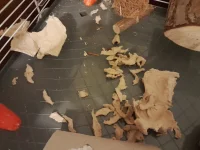
Oh wow. I was amazed at the total lack of of any destruction by Louet and Titch, my previous dwarf. Looks like Blossom really gets stuck in!She can give Blossom a run for her money then who has a love of shredding egg boxes lol
View attachment 10646
Thank youMoth is a sweet little creature. She's luckily found a great home
Thank you. Sometimes being creative can feel like a bit of a curse, you can’t just keep things simple! It took me ages to stick all the moss on. But I think it was worth it. I’m intrigued to see how the destruction affects things. I’m planning out the new cage, but depending on the damage done here, I may have to scale back my plansThat looks amazing! You are very creative and Moth looks very sweet. So Moth will like destroying things then?! Will the set up look rampaged soon then?
She certainly does lolOh wow. I was amazed at the total lack of of any destruction by Louet and Titch, my previous dwarf. Looks like Blossom really gets stuck in!
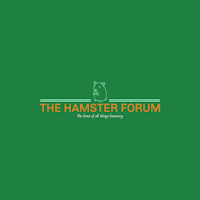
 www.thehamsterforum.com
www.thehamsterforum.com
Will add more info, but may need to wait until after the weekend. Have been preparing for the royal visit aka my mum. I take the opportunity to deep clean the house, as she only comes once a year for the quilt show. Then I’m working the weekend……..Could you tell us some of the specific features about Duprasi that are gerbil-like or hamster-like please?Do they pouch food, dig tunnels and build nests? Do they have tails? Do they climb? (Edit sorry you mentioned earlier they have tails!)
They seem to have a bit of a look of the "Pacific pocket mouse" - there's a thread about them here - I watched a few videos about them reintroducing them to certain areas and it was fascinating.

Pacific Pocket Mice - reintroduction
I came across the virtually extinct Pacific Pocket Mouse and this video about how they bred more of them in captivity and are reintroducing them to the wild. They seem a bit like hamsters as they hoard food in their "pockets". But very tiny and cute! There are some really interesting bits in...www.thehamsterforum.com
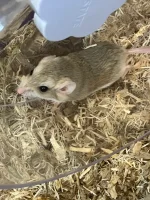
She sounds like she's being a little diva at the moment! So do they not eat grains etc as well as insects? The pellets sound a good idea in addition to live insects as I imagine most owners would struggle to keep enough live insects!
was freaked out enough when one of my Syrians found a slug on the floor and pouched it
I used to have a real phobia about moths.
We use essential cookies to make this site work, and optional cookies to enhance your experience. Optional cookies include third party cookies from Youtube (which enable embedded Youtube videos to play) and affiliate partners that help support the forum.
